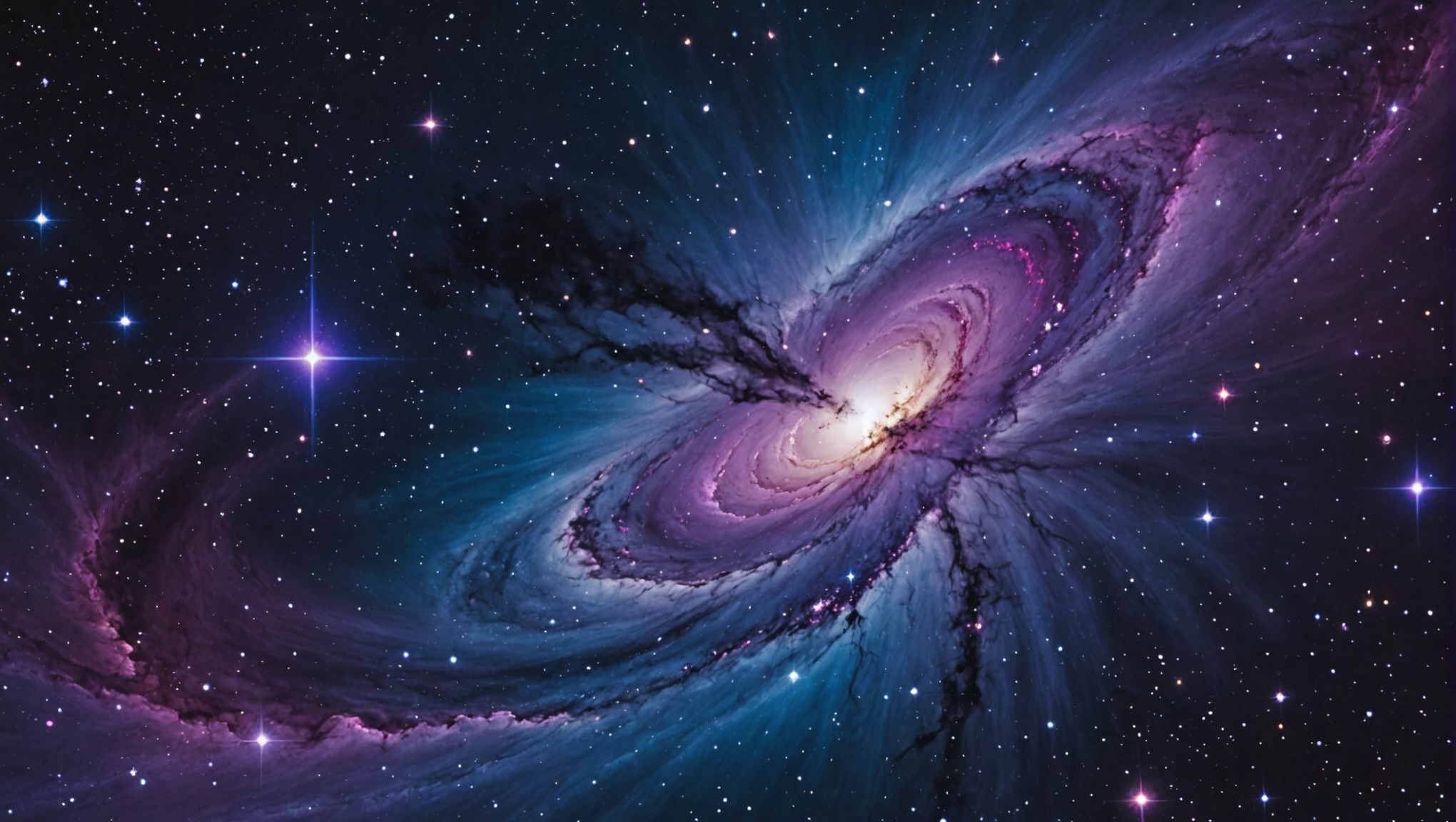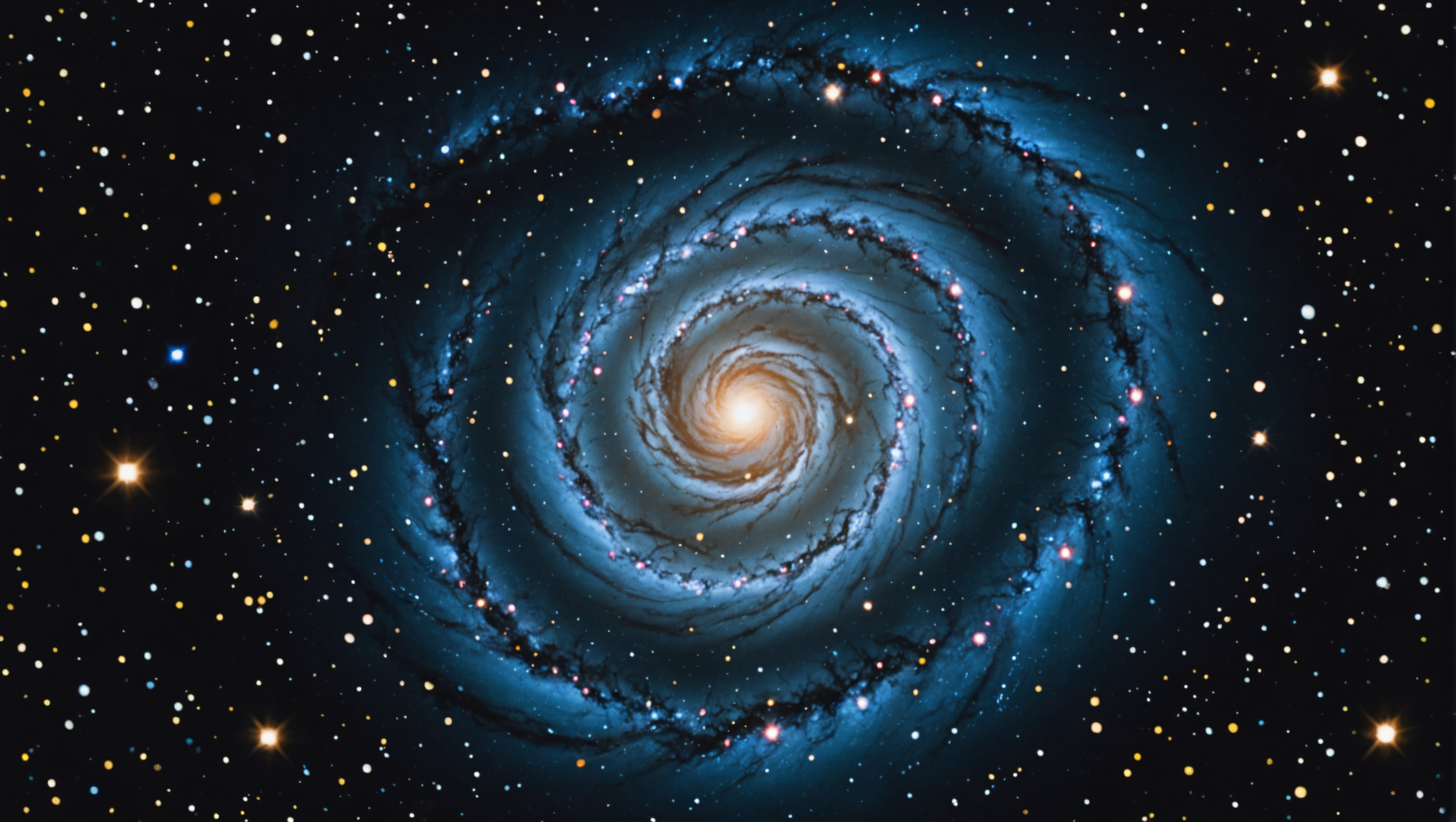Cosmic Whispers of Creation and Discovery

The Origins of Cosmic Mysteries
In the quest to comprehend the vast universe, the very origins of cosmic mysteries capture our imagination and fuel our scientific inquiries. The landscape of existence as we know it emerged from events that occurred approximately 13.8 billion years ago in a profound and extraordinary explosion—the Big Bang. This event is the cornerstone of our understanding of cosmology, suggesting that the universe began as an infinitely hot and dense point, or singularity, which subsequently expanded, giving rise to all matter, energy, and the vast tapestry of space and time. It hints at a time when the fabric of space was a hot, turbulent cauldron, filled with unformed elements yearning to self-organize into the stellar phenomena we observe today.
The Big Bang led to the creation of subatomic particles and light. As the universe cooled, these particles began to combine, forming atoms and eventually leading to the synthesis of simple elements like hydrogen and helium. Over millions of years, gravitational forces tugged at these elements, initiating a profound process—stellar formation. This cycle serves as a precursor to more complex structures, including galaxies and clusters of galaxies. Understanding these formative events especially important as they establish the groundwork for everything that follows, including the possibility of life.
To grasp the intricacies of cosmic origins, one must also explore the theory of cosmic inflation, which posits that an incredibly rapid expansion of the universe occurred in the milliseconds following the Big Bang. This phenomenon addresses several challenges faced by traditional models of cosmology by explaining the uniformity of the cosmic microwave background radiation—the afterglow of the early universe—as well as the distribution of large-scale structures. Inflation suggests that what began as a homogeneous and chaotic early universe was smoothed out, leading to the diverse structures we observe today.
As scientists venture further into this realm, alternative cosmological models have emerged. Among them, the intriguing Multiverse Theory proposes that our observable universe is just one of countless others, each possibly governed by its own unique set of physical laws. This hypothesis invites philosophical contemplation and a debate about the nature of reality itself. It evokes questions not only about our individual significance within the cosmos but also about the conditions required for life as we know it. Each of these explorations feeds into our broader inquiry into existence and the very nature of the universe.
The advancement of technology—particularly in observational astronomy—has enabled us to push the boundaries of cosmic exploration further than ever before. The deployment of powerful telescopes and satellites has transformed our ability to analyze the remnants of the early universe. Organizations such as NASA and the European Space Agency continually expand our understanding through missions that capture images and data from celestial bodies, allowing us to unravel ancient mysteries.
Moreover, the cosmic microwave background radiation stands as a paramount relic of the universe’s early state. By studying this faint glow, which emerged when photons began traveling freely in the early universe about 380,000 years post-Big Bang, researchers glean critical insights about temperature, density fluctuations, and the large-scale structure of the cosmos. These observations provide an essential link to our cosmic heritage and the unfolding history of the universe.
In probing the origins of cosmic mysteries, we not only gain insight into the formation of the universe but also enable a deeper contemplation of our place within it. The interplay between scientific discovery and philosophical reflection encourages us to embrace both the wonder and complexity of existence. As our understanding of the cosmos evolves, one thing remains clear: the journey into these origins is as thrilling as it is enlightening, inviting us to consider what lies beyond the stars as well as the very nature of reality itself.

Unraveling the Nature of Dark Matter and Dark Energy
To truly appreciate the depths of the universe, one must first confront the enigma this is dark matter and dark energy. These two components are fundamental to our understanding of the cosmos, yet they remain, to a large degree, elusive and poorly understood. Collectively, they constitute approximately 95% of the universe’s total mass-energy content, rendering the observable matter—the stars, planets, and galaxies—an insignificant fraction of the overall cosmic picture. Thus, we find ourselves in a perplexing conundrum: the vast majority of the universe is composed of stuff that we cannot directly observe.
The search for dark matter began as scientists noticed discrepancies in the rotational speeds of galaxies. Observations revealed that the outer regions of galaxies were moving at such high velocities that they should have flown apart, in contradiction to the amount of visible matter present. This discrepancy led to the postulation of a mysterious, invisible substance—dark matter—which does not interact with light or electromagnetic forces, and thus remains undetectable by standard telescopic means. However, it exerts gravitational influence over galaxies and galaxy clusters, controlling their structure and motion. The existence of dark matter has been predominantly inferred through its gravitational effects, depicting a cosmos steeped in hidden complexities.
Furthermore, galaxy cluster observations presented additional evidence. When studying clusters, scientists observed phenomena such as gravitational lensing, where light from more distant galaxies is bent around massive clusters of dark matter. This lensing effect allows astronomers to map the distribution of dark matter, revealing its influence over the large-scale structure of the universe. In this way, dark matter acts as a cosmic scaffolding, shaping galaxies and clusters, sculpting the very fabric of the universe.
Moving from dark matter to dark energy introduces another layer of intrigue. While dark matter acts as a gravitational adhesive within the cosmos, dark energy serves as an unexpected antagonist to gravity. Discovered through distant supernova observations and subsequent measurements of the cosmic microwave background radiation, dark energy is responsible for the universe’s accelerating expansion. Where once it was believed that gravity would eventually slow the cosmic expansion, the discovery of dark energy has prompted a dramatic shift in our understanding of cosmic dynamics.
One popular model is the cosmological constant, a concept
originally proposed by Albert Einstein that describes dark energy as a uniform energy density filling space. In this view, it posits that dark energy exists as an inherent property of space itself, always pushing galaxies apart. Alternatively, researchers have proposed varying dynamics, such as quintessence—a dynamic field that can change over time, allowing fluctuating forms of energy to impact cosmic expansion. Both models represent humanity’s growing quest to comprehend the unfathomable and to reconcile the effects of unseen forces shaping our universe.
Experimental and observational advances enable researchers to probe the mysteries of dark energy further. New telescopes and surveys, including the Dark Energy Survey and upcoming missions such as Euclid and the Wide Field Infrared Survey Telescope (WFIRST), aim to map galaxy clusters and analyze supernovae, each providing insights into the ongoing effects of dark energy on cosmic structure.
As we delve deeper into these cosmic phenomena, the implications are profound. They invite us to question not only the physical reality of dark matter and dark energy but also the fundamental laws governing the universe itself. Concepts like the Multiverse emerge from these explorations, suggesting that our universe might be just one within a grand tapestry of countless others, each with its own unique properties of matter and energy.
This persistent dance of exploration continues to broaden the horizons of scientific inquiry, with dark matter and dark energy standing as monumental pillars of cosmology. Each revelation in this domain nudges us closer to understanding the true nature of our universe, encouraging the integration of theoretical frameworks, observational strategies, and philosophical considerations. Fueled by curiosity and ingenuity, our relentless pursuit to unravel the intricacies of dark matter and dark energy highlights the bravery of human inquiry—the desire to understand the very fabric of reality, stitching together the narrative of our cosmic existence.

The Search for Life Beyond Earth and Extraterrestrial Intelligence
The search for life beyond Earth epitomizes one of humanity’s grandest quests, intertwining scientific aspirations with existential questions about our place in the cosmos. As we gaze into the night sky, we ponder an age-old question: Are we alone in the universe? This curiosity not only stimulates scientific inquiry but also prompts philosophical contemplation on life itself, its origins, and its myriad forms. The emergence of astrobiology, a field dedicated to studying the potential for life in the universe, exemplifies our drive to seek answers.
Astrobiology investigates life in various environments, from our familiar Earth to the icy worlds of our solar system and beyond. The discovery of extremophiles—organisms that thrive in Earth’s most hostile environments—has expanded our understanding of life’s resilience, prompting scientists to consider the possibility of life in unexpected places. Could microbial life exist in the subsurface oceans of Europa, a moon of Jupiter, where liquid water lies beneath a thick layer of ice? The excitement surrounding such inquiries propels missions for exploration. NASA’s Europa Clipper mission aims to investigate this moon and assess its habitability, searching for signs of life in its hidden oceanic depths.
Furthermore, Mars has emerged as a focal point in our quest for understanding extraterrestrial life. Recent missions like the Perseverance rover and the Mars 2020 program focus on identifying signs of ancient microbial life and assessing the planet’s past habitability. Evidence of liquid water flowing on Mars in the past—a factor essential for life—combined with indications of subsurface brine, fuels optimism. Microbial life, if it ever existed on Mars, might have left delicate traces within the geological record, waiting to be unearthed by robotic explorers. Understanding the history of water on Mars not only informs our search for life on the Red Planet but also reflects broader lessons about the evolution of environments conducive to life.
As we extend our gaze beyond our solar system, the discovery of exoplanets has revolutionized the possibilities for habitability. The Kepler Space Telescope’s observations of thousands of planets orbiting distant stars have illuminated their potential for supporting life in the so-called habitable zone. This zone, situated at the right distance from its host star to allow for liquid water, has revealed countless worlds that could harbor life. Through spectroscopy, we analyze the atmospheres of these exoplanets, searching for bio-signatures—chemical indicators such as oxygen, methane, and water vapor that can suggest biological processes.
The presence of bio-signatures offers tantalizing clues about life beyond Earth. For instance, the simultaneous detection of both oxygen and methane in an exoplanet’s atmosphere could signal active biological processes, as these gases tend to react chemically. The possibility of detecting such markers has steered the astrobiological focus from merely finding planets to actively establishing the conditions under which life could thrive elsewhere in the universe. The exploration of atmospheres promises to unfold a narrative of habitability that transcends Earth’s paradigm, inviting us to rethink our definitions of life itself.
Despite these scientific pursuits, the search for extraterrestrial intelligence (SETI) stands as a unique branch of this exploration. SETI investigates the existence of technologically capable civilizations beyond Earth, employing advanced technologies to sift through the universe’s background noise for signals that may denote intelligent life. This ambitious endeavor employs radio telescopes—after all, if advanced civilizations are out there, they might be employing the same electromagnetic spectrum we do. The paradox, however, known as the Fermi Paradox, continues to haunt researchers: if life is so abundant, why have we not encountered any signs of it?
This paradox has fueled a high number of theories. Some suggest that while microbial life may be common, intelligent civilizations capable of communication are exceedingly rare, constrained by factors like planetary conditions and their own suppressed technological advancement. Others posit that civilizations may self-destruct before they can extend their reach across the cosmos. Space, vast and silent, becomes a canvas for speculation, as we consider the very nature of intelligence and the pathways life can take.
As the technologies owing their existence to state-of-the-art science improve, we find ourselves positioned to explore these tantalizing questions more deeply. Beyond radio waves, we are now considering optical SETI, aiming to detect pulsed laser signals—a different medium through which intelligent life could communicate. Moreover, as our data collection and analysis methodologies evolve, we edge closer to answers that could redefine our understanding of life, existence, and our role in an ever-expanding cosmos.
Ultimately, the search for life beyond Earth as well as the investigation of extraterrestrial intelligence unravels an intricate tapestry interwoven with science and philosophy. It invites us to confront complex questions about our existence, the conditions required for life, and the nature of consciousness. As we strive to unveil the mysteries locked within the cosmos, every discovery invites wonder, fueling our thirst for knowledge and the possibility of sharing the universe with others. Driven by a profound sense of exploration, we step into the future, where the potential discovery of fellow cosmic travelers could profoundly reshape our narratives about life, existence, and the very fabric of reality.